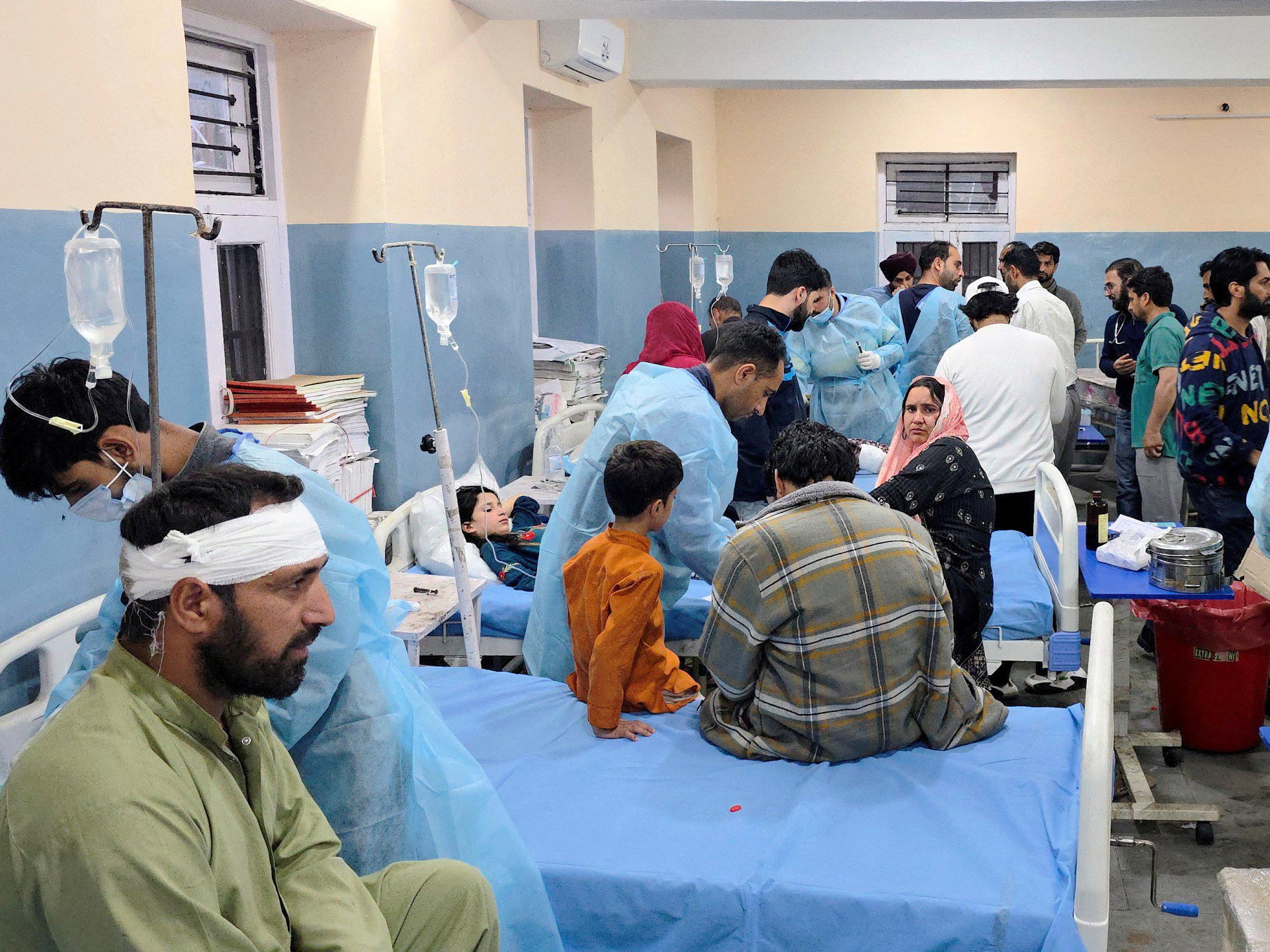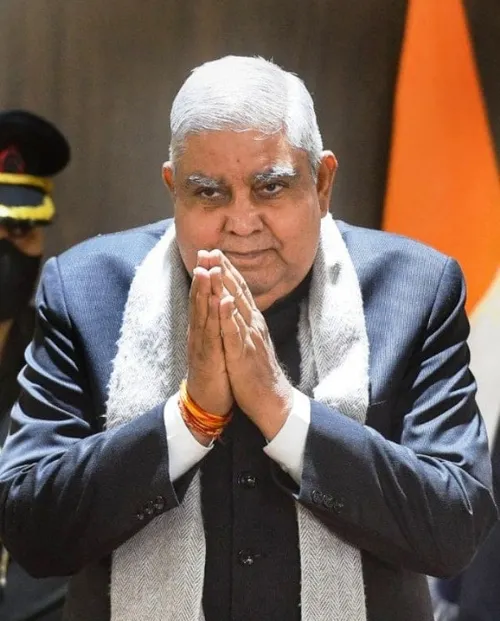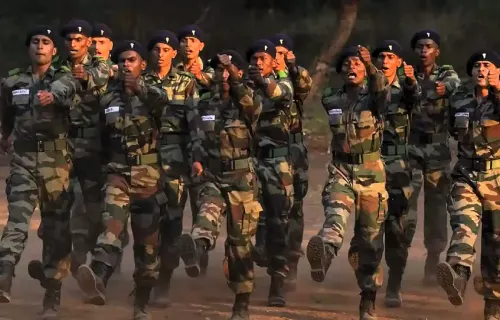Srinagar, Indian-administered Kashmir – As the camera panned around a home blown up by the mortar fire in Poonch, an embattled hill city perched on the disputed border between India and Pakistan, a disembodied female voice cried out.
“This is a calamity.”
The video, shared with Al Jazeera by locals in Poonch, revealed a collapsed staircase, large craters in the walls, and a courtyard cluttered with rubble and clothes, and painted in blood.
“Everything I built is in ruins,” the voice exclaimed, loaded with anguish.
At least 11 people have been killed in Poonch district from Pakistani firing into Indian-administered Kashmir since early May 7, in retaliation for Indian missile strikes that hit multiple sites across Pakistan’s Punjab province and Pakistan-administered Kashmir.
The Indian strikes – themselves a response to a deadly attack on tourists in Indian-administered Kashmir’s Pahalgam on April 22 – mark the most extensive attack on Pakistani soil since their 1971 war that ended with the eastern wing of Pakistan lopped off, resulting in the creation of Bangladesh.
Yet, as the nuclear-armed neighbours stand on the edge of a potential military conflict, many Kashmiris say they are facing the brunt of their tensions. Pakistan’s bombardment of Indian-administered Kashmir on Wednesday night was, according to locals and experts, the most intense shelling that villages and towns in the region have seen in more than 40 years.
“This was a night of terror,” Rameez Choudhary, a resident of Poonch, told Al Jazeera.
The dead, officials told Al Jazeera, included two siblings who were crushed to death after an exploding shell dropped on their house; two local store-owners who were hit by the raining munitions; a seven-year-old child; a teenage boy; a 35-year-old homemaker; and four other men.
The worst-hit villages in Poonch district were Shahpur, Mankote and Krishna Ghati, while shelling also intensified in Rajouri district’s Laam, Manjakote, and Gambhir Brahmana areas as residents fled to safety.

‘This war has been forced upon us’
The border skirmishes have followed the deadly attack at the tourist resort town of Pahalgam in Indian-administered Kashmir two weeks ago, in which 26 people, mostly Indian visitors holidaying in the disputed region, were killed.
During the wee hours on Wednesday, Indian military warplanes arced across the skyline and fired missiles and other munitions into neighbouring Pakistan. Indian authorities said they targeted at least nine locations inside Pakistan.
India charges Pakistan with supporting the armed group that attacked Indian tourists. Pakistan, however, has denied the accusation. India claims its missiles hit “terror base camps”, but Pakistan says the strikes killed 31 people, all of whom were “innocent civilians”.
The scale and spread of the current military tensions – India struck four cities separated by hundreds of kilometres in Pakistan’s Punjab province, in addition to sites in Pakistan-administered Kashmir – make them even graver, in some ways, than the last war between the neighbours in 1999, say some experts.
Back then, servicemen from the Pakistani army had disguised themselves as rebel fighters and taken up positions in the snow-covered, craggy mountains of Kargil, territory under de facto Indian control, leading to a conflict. Hundreds of soldiers died on each side, but the battles were – unlike this week – contained to Kargil.
“This war has been forced upon us. The [Pahalgam] attack was aimed at provoking a situation in which we have no option but to strike back,” said Tara Kartha, director at the Centre for Land Warfare Studies (CLAWS), a New Delhi-based think tank, and a former official at India’s National Security Council Secretariat.
To be sure, the countries came close to war in 2019 in the aftermath of the deadly attack in Pulwama town in South Kashmir when a suicide bomber blew up an Indian paramilitary motorcade, killing 40 Indian servicemen. Indian fighter jets fired missiles that struck Balakot in Pakistan-administered Kashmir.
But according to Kartha, the current crisis is different.
“Both sides carefully managed 2019. Everything was kept confined to a certain limit. But this time, it has been brutal,” she said, while arguing that “India has been very mature”. Pakistan’s military and civilian government have, however, accused India of fanning the flames of war and escalating tensions.
Caught on the front lines of their confrontation are Kashmiris. On Wednesday, three different regions in Indian-administered Kashmir were struck by Pakistani shelling.
“Initially, we thought it was thunder. The skies rumbled at 1am,” Altaf Amin, a 22-year-old resident of Chandak village in Poonch, told Al Jazeera.

‘We don’t want war’
Poonch is just 10km (six miles) from the Line of Control (LoC), the contested border that separates the Indian- and Pakistan-controlled territories in Kashmir. “The shelling has continued on and off since yesterday. But now, it has stopped,” said Amin.
Social media was quickly flooded with videos showing the severity of the human toll in the border shelling. A clip whose veracity was authenticated by Al Jazeera shows the bloodied body of a teenage boy being carried into a van in Poonch. One of his arms had been blown apart. The different segments in the same clip showed a lifeless body of a child, his head ripped open by a shell.
Amid it all, one refrain emerged loud and clear: “We don’t want war,” said Amin.
Yet, there is also anger on the ground against local authorities.
“People in Poonch are angry because there was no attempt to get them evacuated,” Zafar Choudhary, a political analyst and veteran journalist based in the Jammu region, told Al Jazeera.
Choudhary said that the strikes from the Pakistani side should have been anticipated by the Indian government, and people should have been evacuated to avoid the casualties.
“But none of that happened, which has left people infuriated. There’s a feeling that whenever the trouble between the two warring nations has erupted in the past, it is the people of these hill regions who have borne its brunt,” he said.

Silent guns roar again
The LoC traverses a 740km (459-mile) circuitous route through the mountains, forested ridges, alpine lakes and rivers of the disputed Kashmir region. The line came into being in 1949 after the newly independent India and Pakistan fought their first war over Kashmir, which was then one of the 565 princely states ruled indirectly by colonial Britain.
As both countries rallied their militaries to claim the picturesque region, they eventually settled for a stalemate that forced them to recognise each other’s spheres of influence. The ceasefire line was given recognition by the United Nations, which tried to mediate a referendum in Kashmir so that its people could choose their future.
The vote never happened, and both nations continued to spar occasionally along the disputed border. After the 1971 war that Pakistan lost to India, the ceasefire line was renamed as the LoC. In 2003, after a more than decade-long uprising in Kashmir began to subside, and both countries initiated a peace process to ease hostilities, India took advantage of the truce period to fence off its side of LoC with spools of concertina wire.
The two countries agreed to a ceasefire deal that they renewed in 2021.
Four years later, that agreement effectively lies in tatters.

‘This shelling is unprecedented’
Amin, the villager in Chandak, said that although artillery duels have been common in the border area, the guns had fallen relatively silent since both countries reaffirmed the 2003 ceasefire deal four years ago. “We are familiar with cross-border shelling. But this shelling is unprecedented.”
Another resident from Poonch, which is where most damage has taken place, said that people there have now started following a series of war protocols announced by the government, including building makeshift bunkers.
Residents said many schools in Chandak have been converted into relief centres, with provisions of food and other essentials.
Nearly 260km (162 miles) away from Poonch district, the residents of Salamabad Uri, a border village in Baramulla district, northern Kashmir, have fled their homes, too.
“Last night, the shelling was so intense that two houses were burned down and many people were wounded in the fire from across the border,” Mushtaq Ahmad, 40, a cab driver from the village, said. Ahmad has now moved to the town of Uri.
Salamabad, which is ringed by a pine-covered massif that juts out into Pakistan, has been devastated by near-continuous shelling. Powerful blasts have ripped away corrugated iron roofs from homes, exposing them to harsh sunlight. The inferno caused by the shelling has blazed through neighbourhoods, leaving behind smouldering debris.
“We fear the worst,” said Ahmad, adding that his two daughters, aged 9 and 11, are frightened.
“They are asking why it happened? Would we be killed?” Ahmad says, adding that the cross-border shelling started at 2am on Wednesday, and left two minors – a 13-year-old girl and a four-year-old boy – wounded.
Ghulam Muhammad Chopan, an 80-year-old resident, said that he felt too old to leave his home, but that there was no other option.
“At this age, I had to leave my house. At night, the firing was so intense that by dawn, the village was empty. Everyone fled,” he said.
In Wuyan town in Pampore, a highland area surrounded by a maze of escarpments where the prized Kashmiri saffron grows, townspeople said they were jolted out of their sleep at 1:30am after they heard a loud booming sound.
“A fireball exploded with a flash,” said Gulzar Ahmad, a resident. “I could see two aircraft. One of them returned promptly. But the other one that exploded, its wreckage had fallen into a school playground. Later, it started emitting acrid smoke that drew a large crowd.”
Pakistan claims it shot down five Indian fighter jets on Wednesday morning. While multiple independent reports suggest that at least three planes were indeed shot down, India is yet to confirm any such losses.
As uncertainty lingers over the escalation of tensions between India and Pakistan, locals in Indian-administered Kashmir are fearful and uncertain about their future.
Residents have started hoarding food, fuel and other essential items, anxious and desperate to survive violence they never invited.
“War should never be rejoiced. When the shells hit, they don’t ask your identity,” said Farooq Ahmad, a resident of Kamalkote village in Uri. “Those calling for the war do not know how it feels when a shell lands on your kids when they are asleep at night.”
Anurag Dhole is a seasoned journalist and content writer with a passion for delivering timely, accurate, and engaging stories. With over 8 years of experience in digital media, she covers a wide range of topics—from breaking news and politics to business insights and cultural trends. Jane's writing style blends clarity with depth, aiming to inform and inspire readers in a fast-paced media landscape. When she’s not chasing stories, she’s likely reading investigative features or exploring local cafés for her next writing spot.






